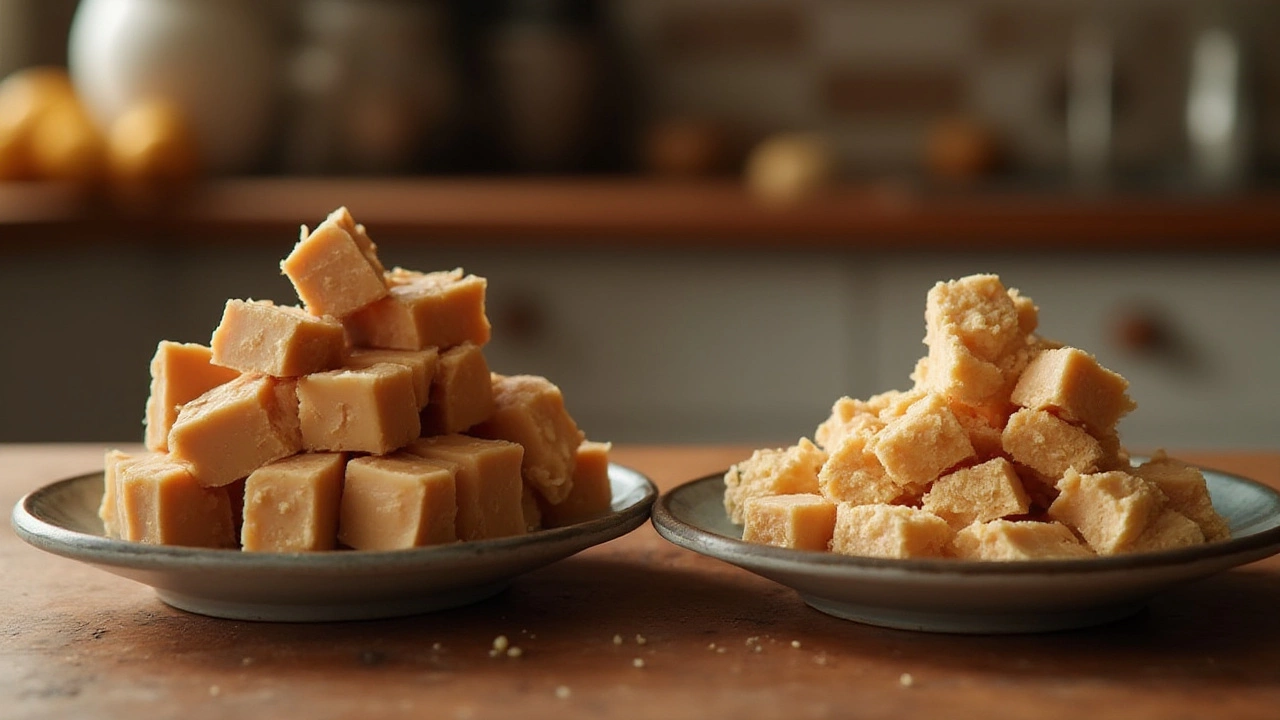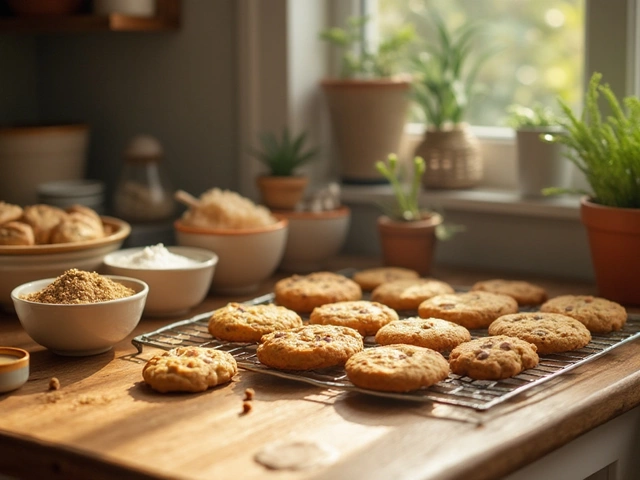
Imagine the excitement of making homemade fudge—watching the chocolate melt, the sugar combine, the sweet aroma filling your kitchen. But what if that pure joy crashes when, after careful cooling, your fudge turns out way too hard or crumbles like dried plaster? You probably boiled it too long, but what exactly happened in that pot—and is all lost?
Why Boiling Time Matters So Much In Fudge Making
Fudge is a bit of a diva when it comes to timing. Go too short, and you’ll be spooning up sticky goop. Go too long, and you’ve basically invented a block for self-defence—or at least, an aggressively grainy treat. The magic of fudge is all about controlling the sugar’s transformation. When you boil the mix, sugar dissolves into the liquid (water, milk, cream), and as it heats past 100°C (212°F), water evaporates. This raises the sugar concentration and, as it climbs, the temperature jumps. In classic recipes, you usually aim for about 112°C to 116°C (234°F to 240°F) — the so-called "soft ball" stage. This is where the sugar concentration is just right for fudge: set enough to slice, still creamy as a dream, and never rubbery or tooth-cracking.
Cook past that sweet spot because you’re distracted by a phone call or overcautious about setting, and the sugar solution thickens way too much. Evaporate more water, pump up the sugar concentration, and you’ll hit the firm ball or even hard ball stage (>120°C, 248°F+). At this point, you don’t just get firmer fudge—you get gritty, dry, and crumbly slabs. The sugar starts to re-crystallise because there’s not enough water left to keep those crystals happy and separate. What's worse, the more water you lose, the more the fudge contracts as it cools, making it a nightmare to slice cleanly (or at all).
What Happens Inside The Pot: Sugar Science 101
Here’s where things get a little sciencey but stick with me—this is the real trick to mastering fudge. Your average fudge recipe is about two-thirds sugar by weight, and as it boils, the water starts racing off as steam. As the mix thickens, it bubbles differently: at first, the bubbles are big and lazy, but later they’re fierce and smaller, a sign the temperature’s shooting up. If you just stand back and let it boil and boil, thinking that will guarantee a set, you’re actually pushing your fudge out of the creamy zone and into concrete territory.
Chemists call it supersaturation—the point where there’s more dissolved sugar than the water should, by rights, be able to hold onto. That’s necessary for fudge, because when you agitate it while cooling, you encourage millions of tiny crystals instead of a handful of clumping monsters. But if you overboil, the risk is that those crystals become big and rude. They lock together tightly, making your fudge seize up and turn sandy instead of melting smoothly on your tongue.
According to Harold McGee, author of the legendary “On Food and Cooking,”
"Boiled too long, the fudge mixture loses enough water that sugar crystallizes in large masses, robbing the final product of its smooth, creamy texture."
Worth noting: thermometer dials sometimes lie, or steam can trick your reading—so matching temperature to time is never foolproof. The texture is all about molecules behaving themselves, and fudge doesn’t care about your impatience.

The Signs You've Boiled Fudge Too Long
It’s not always obvious you’ve gone too far until it’s too late. Here are the early warning signs you can watch out for:
- Your fudge mixture feels super thick and sluggish as you pour it into the pan. It doesn’t settle or smooth out easily; it’s almost like working with sticky clay.
- When you cut cooled fudge, it doesn’t slice cleanly. Instead, it breaks, cracks, or even shatters into chunks.
- The finished fudge has a crumbly, gritty, or sandy texture, instead of that dreamy, melt-in-your-mouth smoothness.
- The taste might be slightly burned, even if you don’t see obvious scorching. Over-boiled sugars can take on an off taste (think caramel gone wrong).
- It’s hard to get out of the pan; sometimes it’s almost fused to the parchment at the bottom.
For a quick comparison, check out this fudge texture cheat sheet:
| Boil Temp | Stage | Texture in Fudge |
|---|---|---|
| 112–116°C (234–240°F) | Soft Ball | Soft, creamy, holds its shape |
| 118–120°C (244–248°F) | Firm Ball | Very firm, slight crumb, less creamy |
| 121°C+ (250°F+) | Hard Ball/ Beyond | Dry, crumbly, can become brittle |
It’s scary how quickly things can go wrong, so it pays to keep a sharp eye (and preferably, a reliable candy thermometer) on your fudge as it cooks.
Can You Save Overcooked Fudge? Real Fixes and Hard Truths
If your fudge is hard as a brick or crumbles at first touch, don’t toss it just yet. There’s actually hope—though it does take a bit of effort. You can usually salvage overcooked fudge by gently reheating it (preferably with a splash of cream or milk—about a tablespoon per 500g batch is a good start). Melt it back down over low heat, stirring constantly so nothing seizes. Bring the temperature back just to the target soft-ball stage, then remove from the heat and carry on as normal: cool to about 43°C (110°F), then beat until it thickens and loses its glossy sheen.
Keep in mind that reworking isn’t a guarantee. If you scorched the sugar, that burnt taste is hard to mask. Ditto if you over-stirred and shattered the crystal structure—you might only manage to soften up the grit, not remove it. But if the issue was simply boiling too hot or too long, a second chance is on the cards.
Here’s a quick rescue plan if you run into fudge disaster:
- Scrape as much fudge as you can out of the pan (even if it’s set hard).
- Add a bit of milk or cream to a heavy saucepan and melt the fudge gently, stirring constantly.
- Once dissolved, attach your thermometer and re-boil to the correct temperature.
- Follow usual procedure: cool, beat, and set.
And if things are too far gone? Chop your failed fudge into cubes and use it as mix-ins for brownies, cookies, or rocky road bars. Even the crumbliest fudge works in ice cream sundaes if you grate or crumble it over the top.

Tips for Never Overcooking Fudge Again
Everyone slips up in the kitchen, but fudge can be tamed if you keep a few tricks in mind:
- Use a digital thermometer instead of the old-school bulb style—accuracy matters.
- Test your thermometer in boiling water first—standard boiling in Brighton is about 100°C (212°F), but altitude changes this. Make sure yours is reading sensibly.
- Try the “soft-ball” test if you’re nervous: drop a spoonful of cooked syrup into cold water. If it forms a soft, squishable ball, you’re golden.
- Don’t rush evaporation. Boil the mixture at a medium, steady pace—slower means more even texture.
- Never stir the mixture while it boils. This prevents rogue sugar crystals from forming.
- Only beat once the temperature drops to about 43°C (110°F). Any sooner, and the fudge goes grainy.
- Avoid scraping the sides of your pot into the poured mixture. Crystallized sugar on the sides will make your fudge gritty.
- If your fudge is often troublesome, try a recipe that adds a little invert sugar (honey, glucose syrup, or corn syrup) to help stop crystallization at the source.
If you always stick within the target temp zone, and watch for that telltale gloss disappearing as you beat, the result each time should be a creamy slice, not a chalky brick.
Boiling fudge too long is almost a rite of passage for most home bakers. You can absolutely fix some mistakes and avoid future heartbreaks by paying attention to not just time, but temperature and appearance, too. So next time you’re standing over your bubbling pan, know that with a little care—and the odd rescue operation—you can turn out fudge that’s smooth, creamy, and way better than anything at the holiday market.





